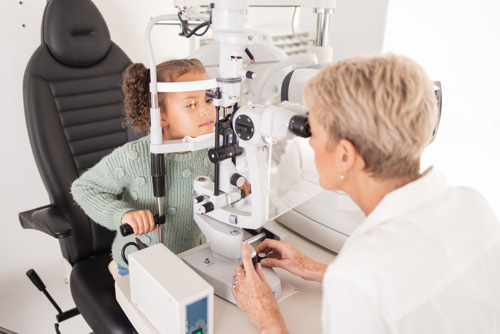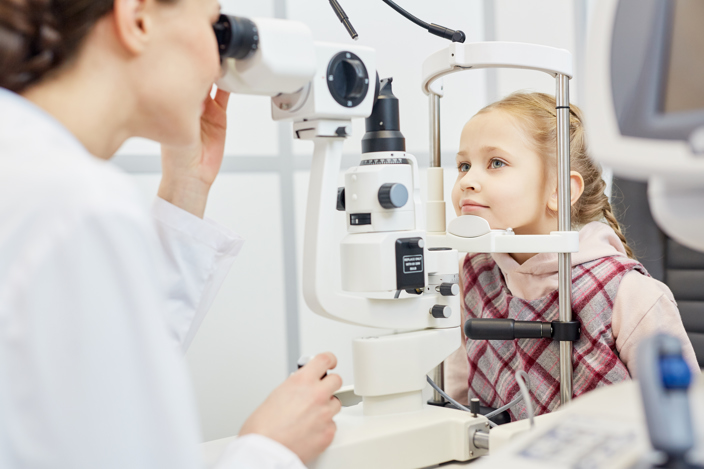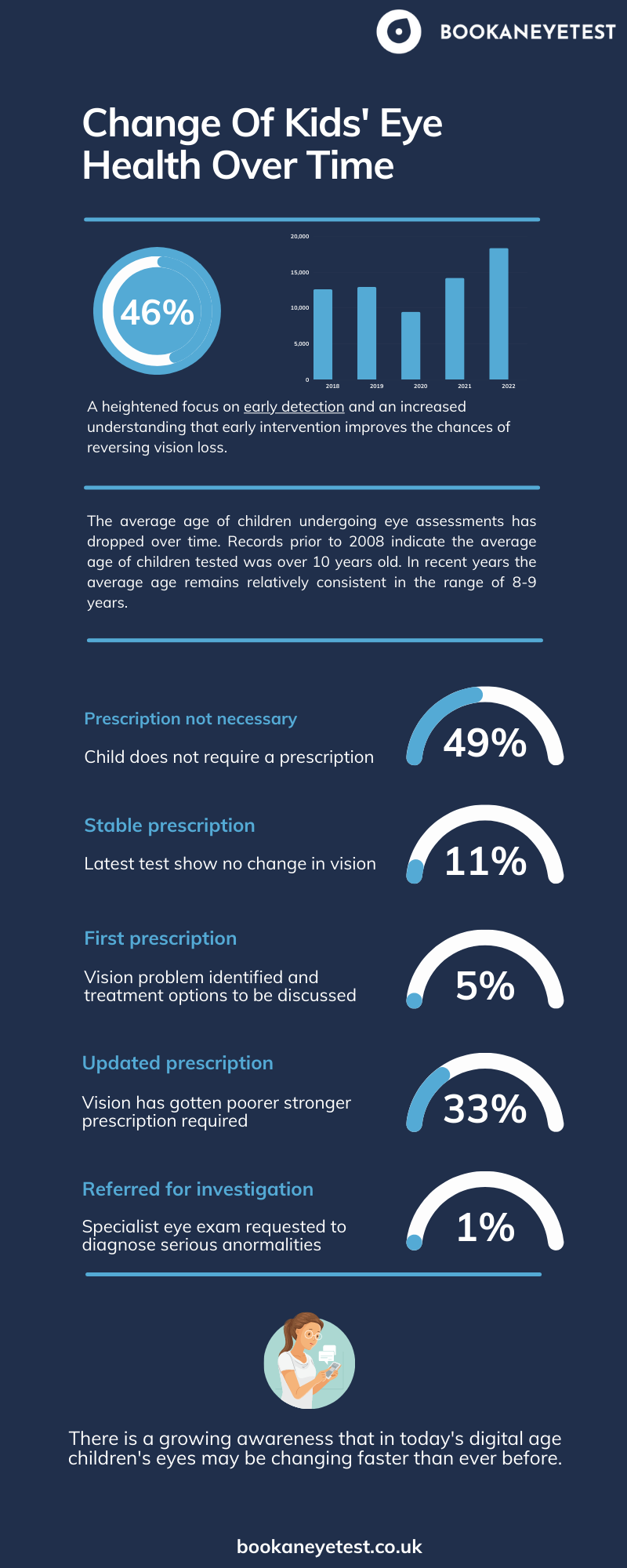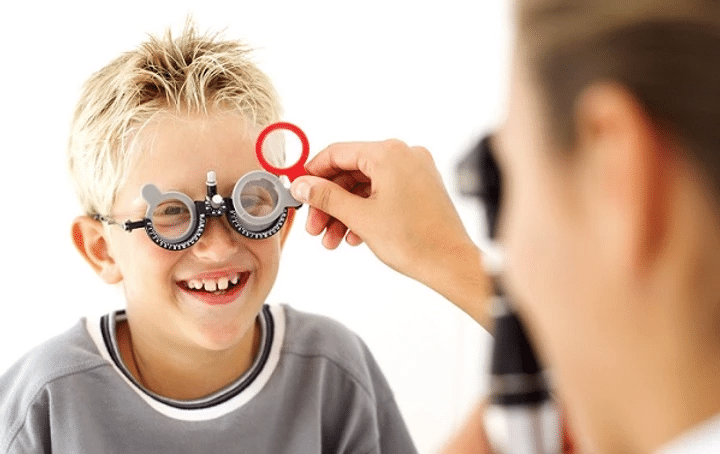The Digital Age is Damaging Your Children's Vision: What Parents Can Do to Protect Their Kids
Good vision is key to a child's physical development and overall well-being. Children's eyes play a vital role in their hand-eye coordination, visual engagement, as well as the crucial aspects of focusing, recognising, comprehending, and remembering.
If a child is lacking in these visual skills, they may experience increased difficulty in learning and may be reluctant to participate in healthy play activities. The prevalence of digital devices in our lives has introduced new challenges around kids' eye health.
Here, we discuss the importance of your child's eye health and the outcomes parents can expect when their child's eyes are examined by an eye care professional. We also look at prescription trends and what they tell us about young eyes.

Overview of Prescription Categories
Vision screening for common problems may be carried out in your child's school. While vision screening is a good first-line check, it is not a substitute for a thorough personalised assessment by an optometrist. Trends indicate that parents are increasingly aware of the benefit of having their children's eyes tested at a young age.
When you take your child for an eye test, what can you expect following the consultation? After performing the exam and considering all the facets which affect your child's eye health, the optometrist will prescribe a path forward.
-
Prescription not necessary: It's quite possible your child's eyes are perfectly fine in which case no prescription is necessary. Importantly, the optometrists will now have a record on which to base future examinations.
-
First prescription: If the exam highlights a vision problem, the optometrist will discuss and recommend treatment options.
Short-sightedness (myopia), farsightedness (hyperopia), and blurriness (astigmatism) are common conditions affecting children. All of these distortions can be remedied with corrective lenses. If the impairment warrants it, the specialist will issue your child's first prescription.
Glasses, or even contact lenses, can then be tailor-made for your child to normalise their sight and support healthy vision.
-
Stable prescription: If your child is already wearing glasses or contact lenses and the latest vision test shows no material changes, then the existing prescription is considered stable and should be good for another twelve months.
-
Updated prescription: Despite the aid of glasses, children with poor vision may experience further deterioration in their eyesight from one year to the next. In this case, an updated prescription may be necessary to strengthen their lenses.
Though it is rarer, some kids with spectacles actually achieve an improvement in their vision and can be moved to a lower prescription.
-
Refer for investigation: A specialist eye exam will also help to detect potentially serious abnormalities like cataracts and glaucoma - which we discuss below. The optometrist may refer worrying findings to fellow professionals for further examination.
Prescription Trends Over Time
Over the last twenty years, eye care practitioners have accumulated useful data sets relating to the number of children sitting for eye exams.
Testing and age numbers
While the available figures for the early 2000s show very few kids being checked, the numbers rise sharply in the last decade. The trend reflects a steady increase - 18,365 child eye exams recorded in 2022 against fewer than 1,000 in 2007.
In the last 5 years, the numbers in this study have tracked solidly upward (save for an expected dip during 2020):
-
2018: 12,571
-
2019: 12,916
-
2020: 9,444
-
2021: 14,166
-
2022: 18,365
The information for 2023 points to a continuation of the trend. This suggests there is growing recognition of the importance of vision care for school-age children and younger.
The average age of children undergoing eye assessments has dropped over time. Records prior to 2008 indicate the average age of children tested was over 10 years old. In recent years the average age remains relatively consistent in the range of 8-9 years.
The trend shows a shift towards examining children at earlier ages. This is possibly due to a heightened focus on early detection and an increased understanding that early intervention improves the chances of reversing vision loss.
Prescription outcomes
Another data set shows a consistent recording of prescription outcomes from 2006 to 2023. Breaking down the 277,421 outcomes into categories we see:
-
Prescription not necessary - 49,08% of cases (136,161 /277,421)
-
Stable prescription - 11.48% (31,875/ 277,421)
-
First prescription - 5.5% (15,535/ 277,421)
-
Updated prescription - 33.7% (93,566/ 277,421)
-
Referred for investigation - < 1% (284/ 277,421)
While the average of updated prescriptions is 33.7%, this category has increased steadily over the years. In 2020, it was nearly 40% while 2021 saw 37.8%.
This trend emphasises the value of regular checks, as well as the need to adjust existing prescriptions to achieve optimal correction.
Factors Influencing Prescription Outcomes
Your eyesight may have a direct bearing on your child's eyesight. Vision problems are often hereditary, so if you or your partner experienced weak eyes at a young age it's a good idea to have your child's eyes checked sooner rather than later.
In today's digital age, excessive screen time is a significant factor affecting the eye health of children and young adults.
Laptops, tablets, and mobile phones are indispensable to modern life. Digital devices serve valuable education, entertainment, play, and stimulation purposes. However extended exposure to digital devices, combined with improper viewing habits, can lead to eye strain, discomfort, and other harmful side effects.
Limiting your children's screen time is not easy especially as kids grow independent while at the same time relying heavily on their screens for learning. As a parent, you can try and ensure that digital engagement takes place in good lighting, with proper posture (screens not held too close to the face).
-
The 20:20:20 rule is also a great tip in this regard. Encourage your children to look away from their screens every 20 minutes, and gaze at something 20 feet away, for at least 20 seconds. This relaxes their eye muscles and helps reduce harmful eye strain.

The NHS - which funds free sight tests for children - has linked short-sightedness to focusing on nearby objects including computers for long periods during childhood. Other research has found that children are twice as likely to experience myopia today than 50 years ago.
Many experts agree that spending time outdoors is good for a child's vision, yet today's kids are overall spending less time outdoors.
It's not surprising then that we see more children taking eye tests today than previously. The fact that children are visiting opticians at a younger age and that more prescription updates are being written is also to be expected.
Addressing Unnecessary Prescriptions
We rightfully expect eye care professionals to accurately assess the visual needs of the patient and prescribe lenses that provide optimal correction without going beyond what is necessary.
Unfortunately, there are times when prescriptions are written unnecessarily.
Professional opticians are mindful of the negative consequences of issuing unwarranted prescriptions. Badly-judged prescriptions cause intolerance, discomfort, and potential harm to the wearer. Not to mention the loss of trust that inevitably results from an unhappy customer who is out of pocket.
The following professional guidelines help avoid such unhappy outcomes:
-
Hold off prescribing glasses if there are any doubts. Rather check again at another date.
-
Invite the patient to leave the consulting room and test the proposed new lenses by looking at signs across the street or distant objects to better gauge the effect.
-
Communicate clearly if the prescription may cause some initial discomfort.
-
Know that an unusual change in refraction can be caused by other factors such as poorly controlled diabetes, a distracted patient, or a more serious underlying condition.
-
Consider holistic health factors which impact vision and liaise with other healthcare practitioners like GPs if needed.
-
Lastly, if their eyes are okay, then there's no need for a prescription.
Significance Of Referrals For Investigation
Some children develop eye complications that require further investigation and specialised intervention. Complications can present at any age; the child may be a few weeks old or well into their teens. A qualified optometrist is equipped to perform an eye examination on a child as young as six months old if necessary.
Conditions that call for referral include:
-
Cataracts: In the UK, all babies are screened for eye problems including congenital cataracts within the first 24-48 hours of their life and checked again by a health visitor around 6-8 weeks of age. Cataracts present as a milky, cloudy lens in one or both of the baby's eyes and should be referred to an ophthalmologist.
Older children can also develop cataracts. If sight and visual development are seriously compromised, surgery may be necessary. Doctors perform this delicate procedure on both infants and older kids. The surgery entails removing the cataract and replacing it with an artificial lens.
-
Amblyopia (lazy eye): Lazy eye is a condition in which one eye has poorer vision than the other. Treatment typically involves patching the stronger eye to encourage the weaker eye to develop. Glasses may also be prescribed to correct any refractive errors. Sometimes a surgical procedure to loosen or tighten the eye muscles is recommended.
-
Glaucoma: Glaucoma is characterised by damage to the optic nerve, often due to increased pressure within the eye. While the condition is fairly rare in children, it can lead to blindness if not treated early enough. Treatment involves eye drops and medicines to reduce the pressure, or surgery if these prescriptions aren't successful.
Data shows that referrals for further investigation involving children are relatively rare. It's comforting to know that your Optometrist can bring in considerable expertise to provide the best care for your child's eyes. Besides GPs, other professionals who might collaborate on referrals are:
-
Ophthalmologists (eye surgeons) are doctors who specialise in the medical and surgical care of the eyes. Ophthalmologists deal with eye trauma, cataracts, lazy eye, and diabetic eye conditions.
-
Orthoptists are experts in squints and eye movement disorders, including amblyopia, that may impair a child's vision.
-
Vision therapists. Vision therapy is designed to improve brain-eye communication through various exercises. Exercises improve focus, tracking, and convergence. Therapy is also used to stimulate hand-eye coordination and enhance visual processing speed.

Implications For Pediatric Eye Care Practices
We've seen that regular eye exams are playing an increasingly vital role in identifying underlying vision problems experienced by children.
Through comprehensive assessments, pediatric eye care practices can diagnose vision problem conditions like short-sightedness, farsightedness, or astigmatism.
They provide timely solutions to help children see clearly and comfortably. Alternatively, they refer to or arrange interventions to minimise long-term risks.
Parents and educators should look out for signs that a child is visually challenged, including:
-
Signs of eye strain like frequent headaches, fatigue, and eye rubbing
-
Trouble focusing
-
Tilting the head to one side
-
Holding books and screens too close to the face
-
Inability to recognise distant objects
-
A reluctance to read
-
Losing their place when reading
Parents, with educators, can set boundaries around a child's screen time while encouraging more outdoor time. Eye-care professionals will be increasingly involved in supporting parents to reinforce behaviours that promote optimal vision care in young people.

Conclusion
There is a growing awareness that in today's digital age children's eyes may be changing faster than ever before.
This underlines the importance of regular personalised eye care assessments from a young age. Early assessments inform the most appropriate support as the child's vision develops. This will help ensure that our children can meet the future with a clear, bright gaze.
Related articles





